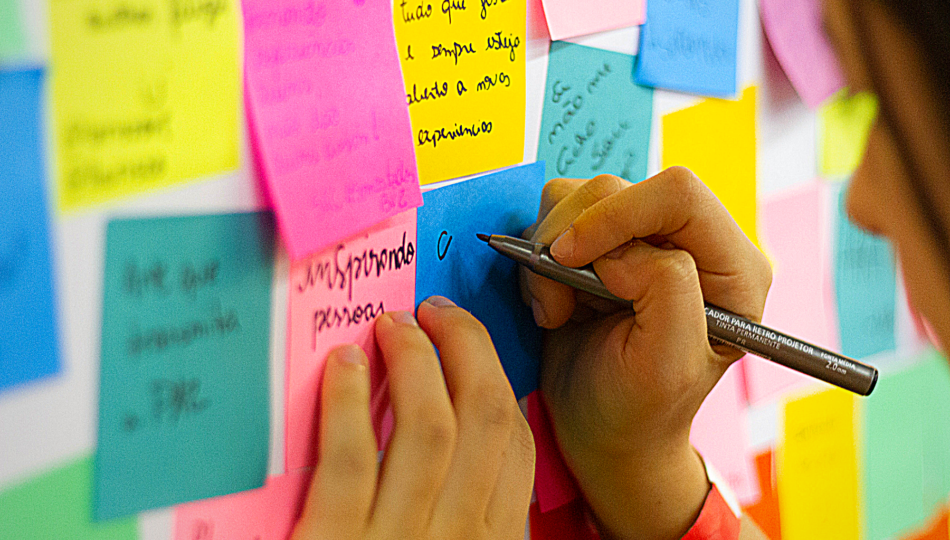Your CAC is ready to roll. You have conducted research and completed a community healthy assessment for Parkinson’s (CHAP). Now, what?
The transition from data collection to action can be difficult for some groups. But it’s a crucial transition; it maintains the group’s momentum and engagement and helps the group build self-efficacy. (We’ve all been part of those committees that meet to talk a lot and then lose steam because they never act. We want to prevent that from happening in your CAC!)
This post provides guidance and resources to help you make this leap and take action.
Identify and Define a Problem
This step might seem like a no-brainer, but it’s more challenging than it sounds. It’s also a vital part of your process. Don’t rush this step! Your problem will be the foundation for what you build. You will revisit it to ground your group, help you edit ideas, and ultimately measure success.
When you look through your data, you may identify several problems worth addressing; so, how do you choose which one to tackle first? It may help to write down all of the issues or themes presented in your data on sticky notes, a whiteboard, or a shared document. (If your group is working virtually, try a tool like Miro for this). Then, ask yourself these questions:
- How are the issues related to each other?
- Are there any common threads?
- Is there one principal problem that would help address aspects of several issues if you solved it?
You might find that the real barrier that needs your attention lives higher up on the chain. Or, as a group, you may resolve to start with one issue now and come back to the others over time. No matter what the case, your group will need to prioritize and make choices, which can be incredibly difficult when you have a lot of passion and want to help people right now. Trust that focusing your energy in one direction will have an impact and that merely having an awareness of some other problems may lead to new connections or opportunities along the way.
 Once you have a general idea of the direction you want to go, several resources can help you define a robust problem/challenge, including this Frame Your Challenge activity from IDEO and this Introduction to the Problem-Solving Process from Community Tool Box.
Once you have a general idea of the direction you want to go, several resources can help you define a robust problem/challenge, including this Frame Your Challenge activity from IDEO and this Introduction to the Problem-Solving Process from Community Tool Box.
If you find it difficult to reach a consensus in your group, you may want to take a step back and go through an activity to reorient yourselves around your impact goals. (We’ll cover more about vision and goal setting in future posts).
Define Your Audience
Part of defining your problem is also defining your audience. Just as it’s crucial to define your group’s problem/challenge, it’s important to know who you are designing a new program or intervention for. This will keep you focused and better allow you to measure your success.
If you need ideas for this step, check out IDEO’s activity to help you define your audience.
Ask More Questions
Now that you have focused your energies on a specific problem and audience, it’s time to dig deeper. The University of Wisconsin Population Health Institute calls this the “fact-finding cycle”:
“There is often a cycle of asking questions about the what and the who and uncovering data in response, which then leads to asking more specific questions like why and how. This fact-finding cycle continues and is a main ingredient of the community health improvement process.”
In this stage, finding answers to your questions will likely require a combination of efforts, including more research, conversations with other community members and leaders, continued surveying, and more. IDEO provides several ideas and tools for collecting more information in their design kit.
Similar to defining the problem and the audience, it’s crucial at this stage to ask better and more specific questions. You might try using this activity and worksheet to help you ask better questions.
 Additionally, it’s essential at this stage to assess your sources for bias and issues of representation. Have the people who will be most affected by this initiative (or who have the most need) been considered? Is there an opportunity to encourage participation at the committee level by seeking help from a representative within your target audience? For example, if your group looks to address needs specific to people who are housebound, could you find someone living with this experience to join your CAC or attend some planning meetings? Similarly, if you are looking to address a lack of resources available for non-English speaking or ESL community members, do you have someone in the planning process that has direct experience with this? Take the time now to adjust to address bias. It will improve the effectiveness of your initiatives later on.
Additionally, it’s essential at this stage to assess your sources for bias and issues of representation. Have the people who will be most affected by this initiative (or who have the most need) been considered? Is there an opportunity to encourage participation at the committee level by seeking help from a representative within your target audience? For example, if your group looks to address needs specific to people who are housebound, could you find someone living with this experience to join your CAC or attend some planning meetings? Similarly, if you are looking to address a lack of resources available for non-English speaking or ESL community members, do you have someone in the planning process that has direct experience with this? Take the time now to adjust to address bias. It will improve the effectiveness of your initiatives later on.
Consider SolutionS
Once you have defined your problem and your audience and collected information, you are finally ready to brainstorm solutions. It might seem like a lot of work and energy to get to this point – and it is! But too often, we want to jump into solutions without taking time to understand what’s going on. This can result in investing time and resources into programs and interventions that don’t make an impact. By taking the time to think critically, you’ll be able to focus your energy on something that will create change.
The solutions, programs, or interventions you come up with will be as unique and varied as the problems you are trying to solve. If you’ve discovered that a portion of your population isn’t able to take advantage of online support groups or exercise classes, you might come up with a list that addresses access to internet, technology, and digital training. If you’ve discovered there is an issue with people being referred to a Movement Disorder Specialist, you might explore building awareness and activities that could take place in collaboration with General Physicians and neurologists.
While you’re in the midst of the design process, it’s also a great time to look into programs, ideas, and interventions that already exist that could help address your problem. These might be in communities across the country or other sectors (including other disease states). If you find an example or model to use, you could speed up results. Not sure where to look? Consider joining our Healthy Parkinson’s Communities™ network to connect with and learn from peers across the country.
We’ll talk more about the process for creating, testing, implementing, and evaluating in future posts. To get started, here are some tools and activities to inspire productive brainstorm sessions and get you moving on the path toward bringing a useful program or intervention to life in your community:
- IDEO’s design kit has numerous ideas and activities for this stage of the process under the “ideation” section. Some that you might find particularly helpful are Download Your Learnings, Brainstorm Rules, and How Might We.
- Community Tool Box has a detailed chapter on designing community interventions that incorporates many of the themes from this post and includes considerations for whether an existing program or intervention could be used to address your problem.
Additional resources
Learn more about design-thinking. This article from SSIR shares insights into how it has evolved over the last decade and how communities and businesses have embraced this way of thinking to solve big problems.
These Liberatory Design Cards were created by the Stanford d.school in collaboration with the National Equity Project to help add a framework of equity into design thinking.
This resource from the Urban Institute outlines principles and best practices for the equitable collection and use of data.

